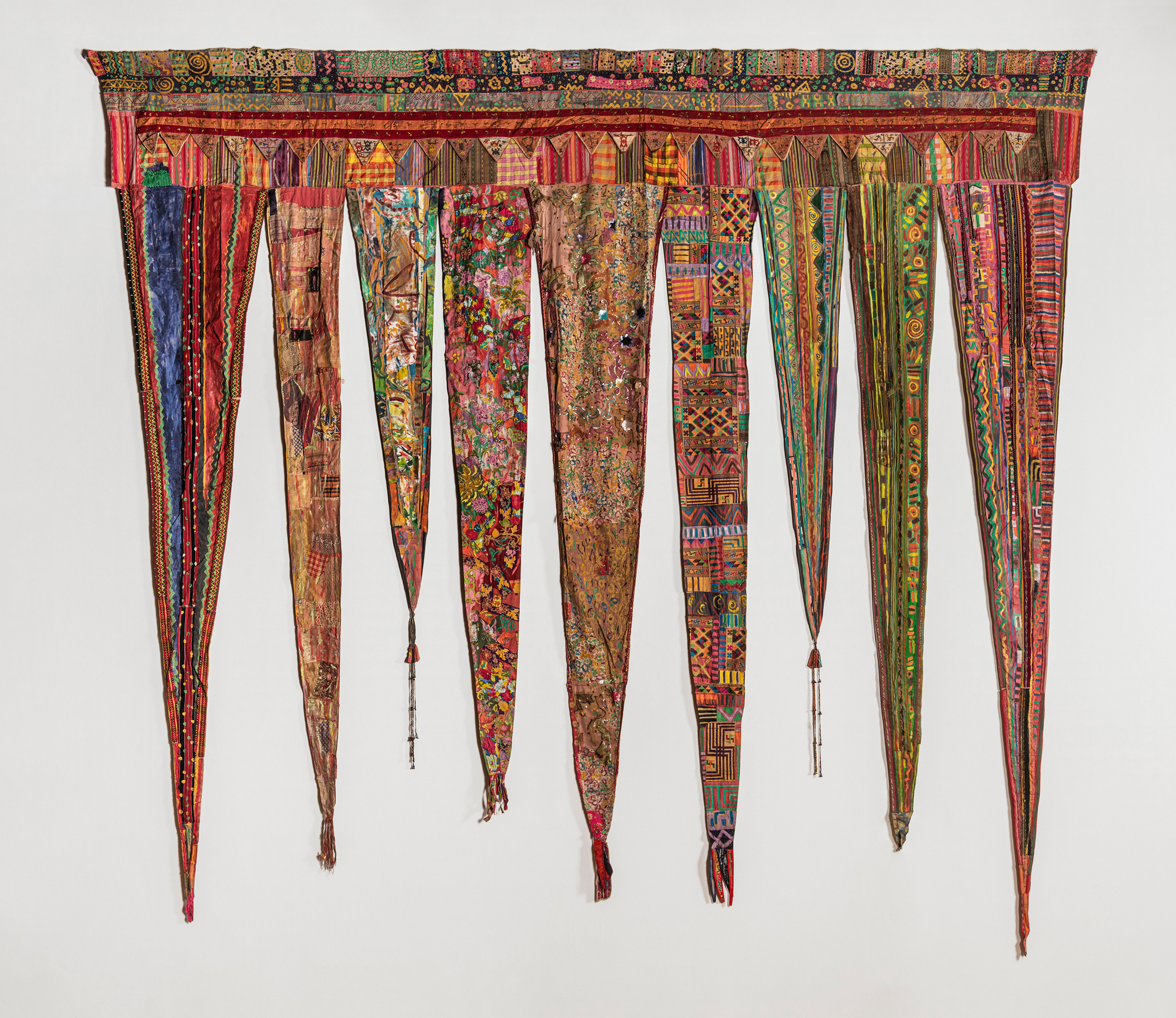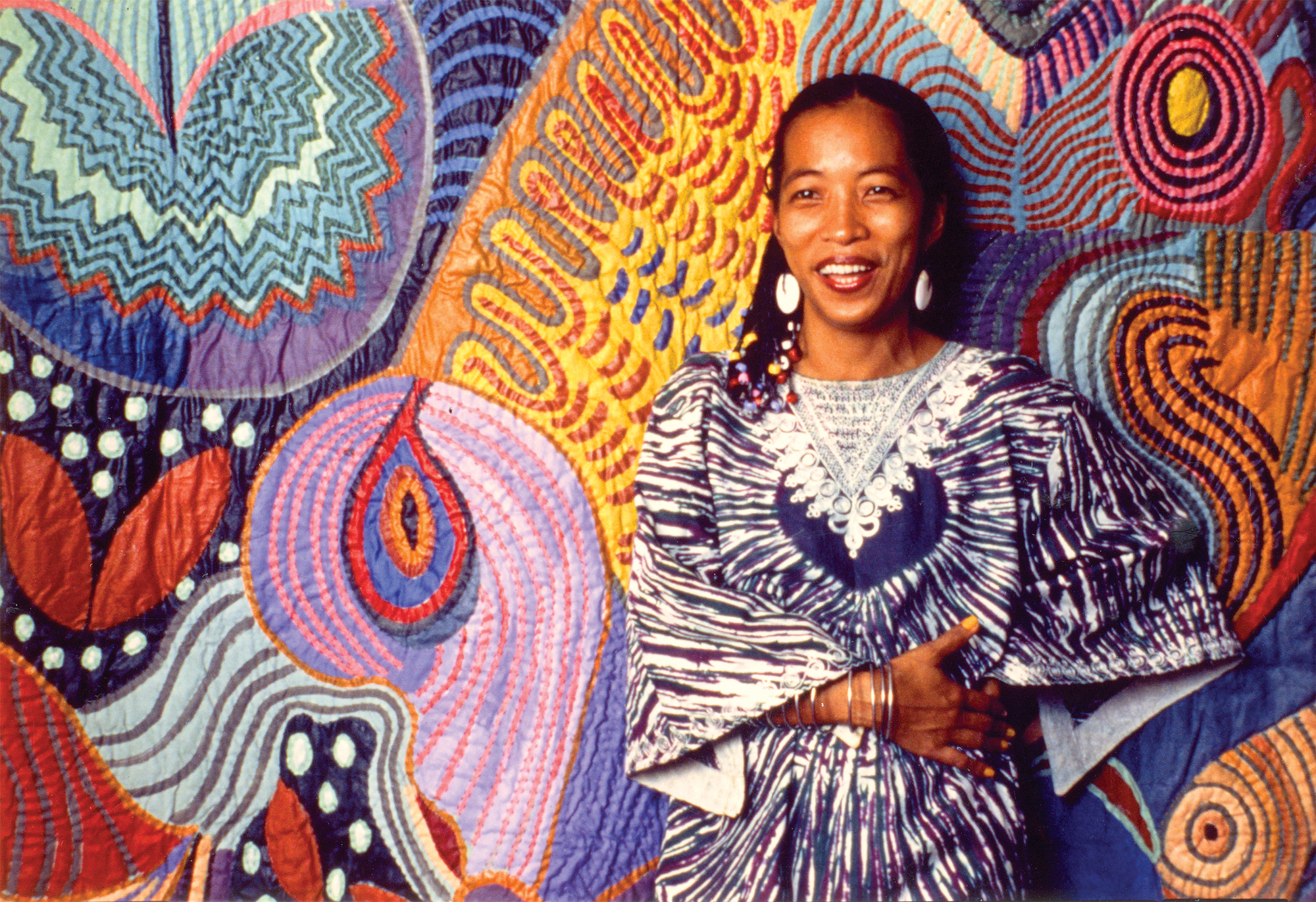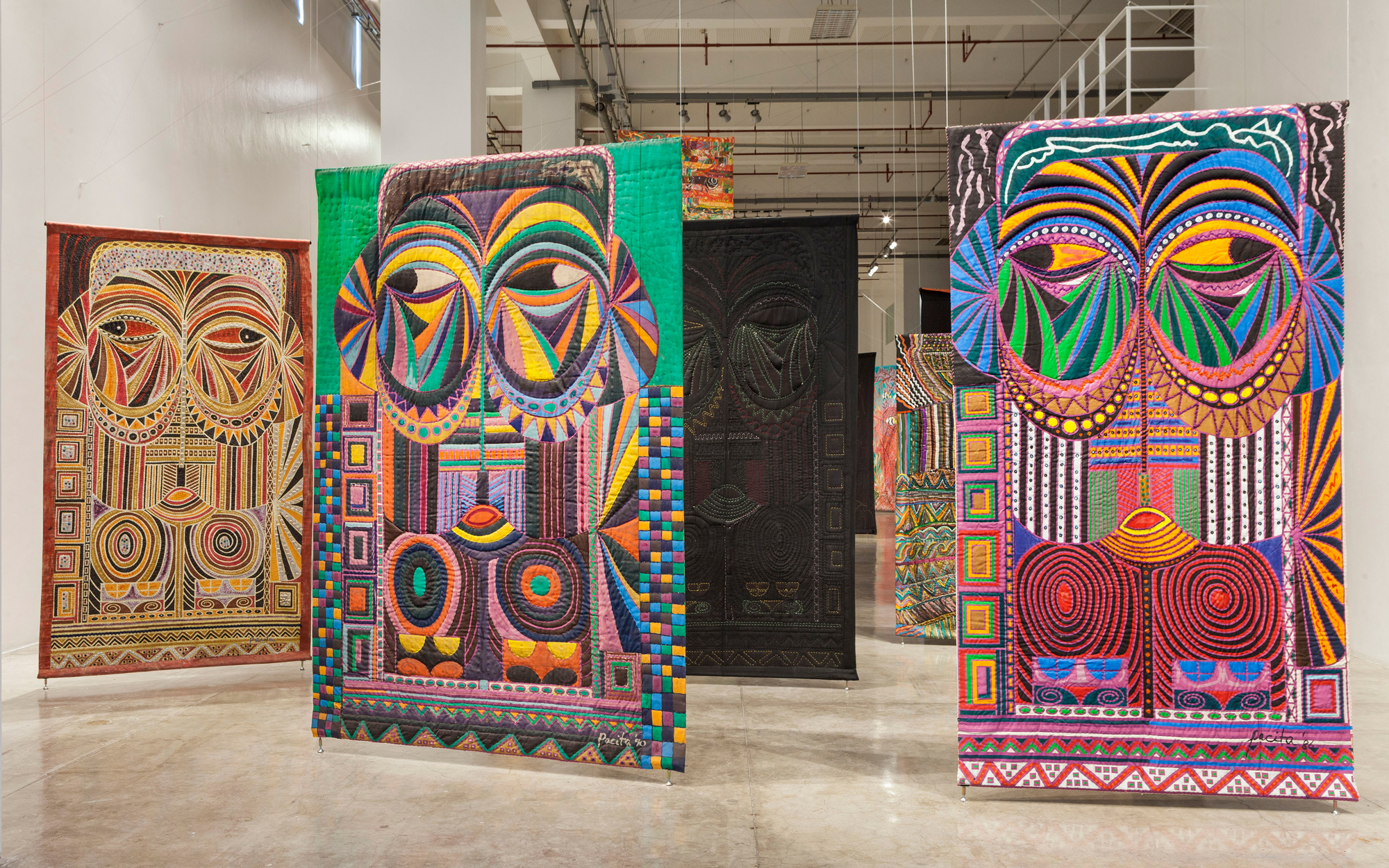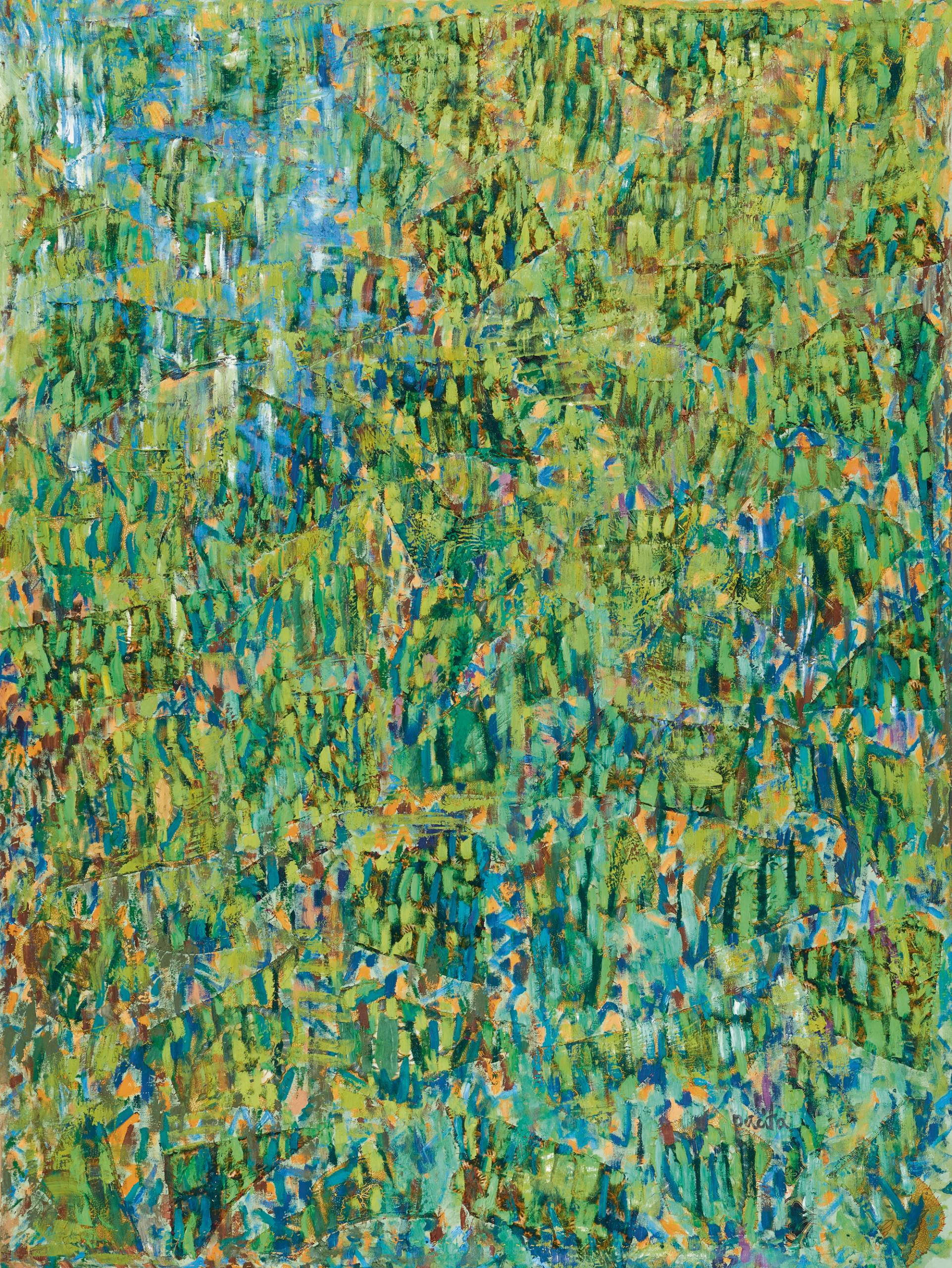
It’s fitting that the San Francisco Museum of Modern Art’s Pacita Abad retrospective opens with a kind of monumental celebratory bunting. 100 Years of Freedom: Batanes to Jolo stretches nearly floor to very-high ceiling, made up of fragments of Indigenous textile work from every province in the Philippines.
Abad made this piece in 1998, almost 30 years after she left the Philippines for what she thought would be a temporary stopover in San Francisco on her way to study law in Madrid. In this way, the SFMOMA show (and 100 Years of Freedom) welcome Abad’s art back to a city that introduced her to wider cultural and political movements. Her time here became the first leg of a lifetime of travel, which led to hands-on study, a deep engagement with traditional craft practices and exuberant, prolific artistic production.
As much as San Francisco might have a claim on Abad’s early adult years, it’s clear throughout the exhibition that she drew from a world of inspirations when making her work — Indonesian wayang puppets, cowrie shells from Papua New Guinea, a kite-maker in Jaipur, India. Over the course of her life, Abad lived in and visited 63 countries across six continents, creating over 5,000 artworks before her death from cancer in 2004 at the age of 58.

The SFMOMA version of this show, which was first mounted at the Walker Art Center, is more distilled, according to curators Eungie Joo and Nancy Lim. But a sizzling energy throughout the exhibition doesn’t leave much space to wonder about what might be missing. This is due in part to Abad’s vibrant palette, which spills out from her painted and embellished textile work onto the color-coded gallery walls (yellow, pink, green!).
That sizzle also comes from the density of her imagery and her additive approach to making. Abad began making trapuntos (stitched and stuffed painted canvases that exist somewhere between paintings and quilts) in 1981. In this show, a trapunto may list acrylic and oil paint, buttons, sequins, beads, yarn, ribbons and mirrors as its media. Colored thread dots the surfaces of these pieces, then reappears on the trapuntos’ otherwise blank versos, evidence of countless tiny piercings that could go unnoticed when taking in the full color and pattern of their frontsides.




